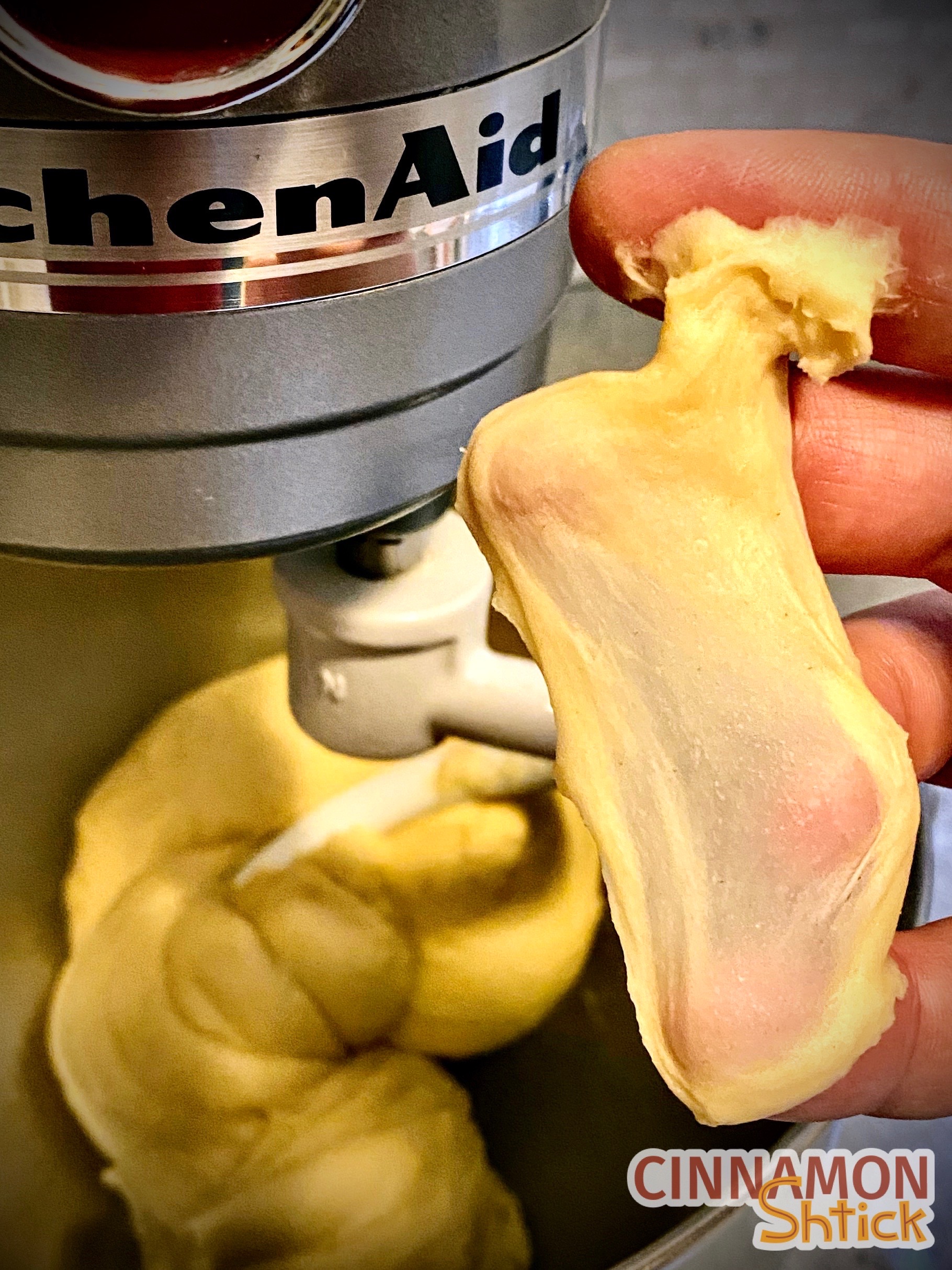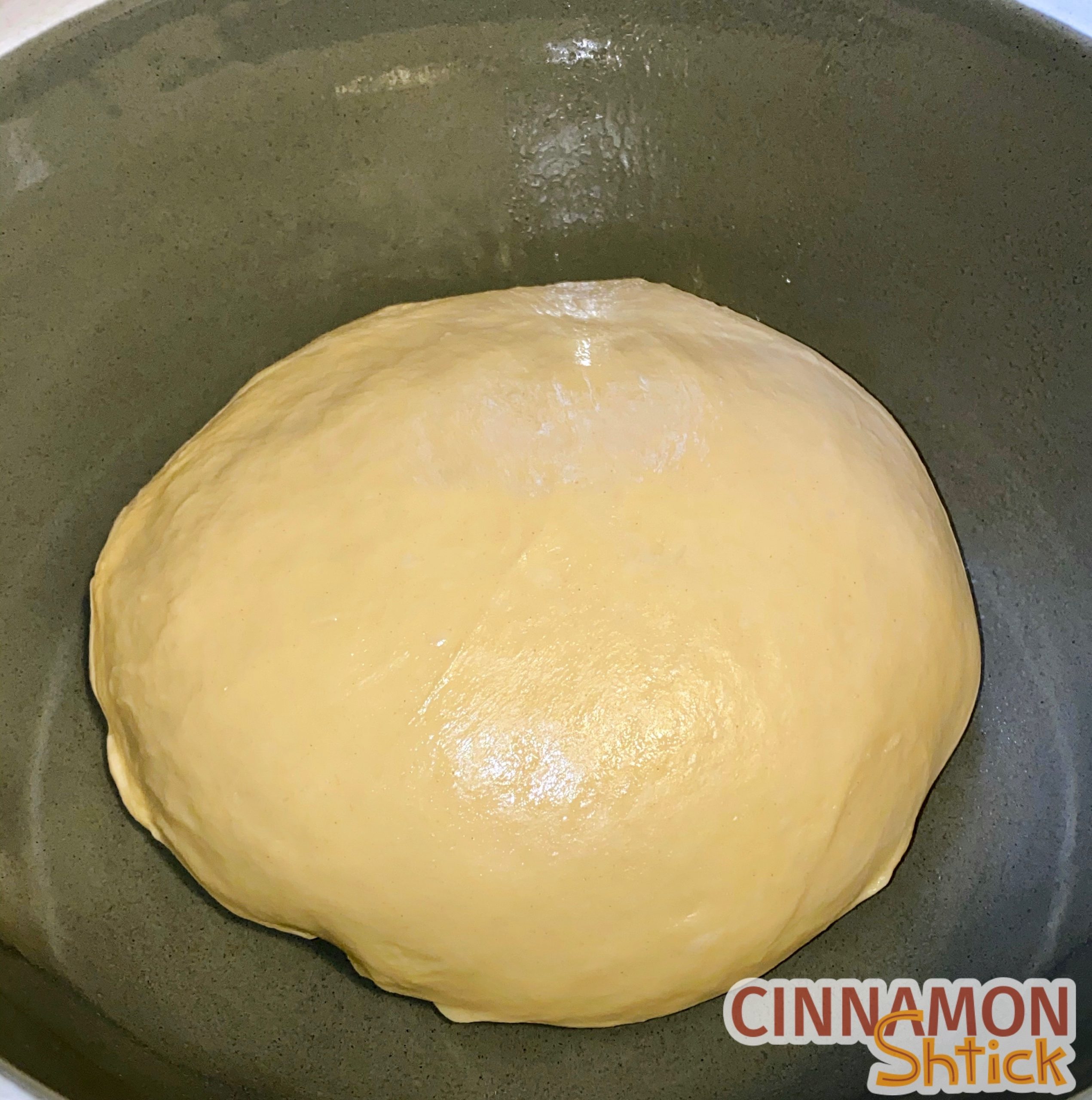This post may contain affiliate links. As an Amazon Associate, I earn from qualifying purchases. For more information, please visit my Privacy Policy.
When most people think babka, they think chocolate babka. I don’t know if that is because people have always loved chocolate babka, or if that famous episode of Seinfeld got everyone all jazzed about it. To be totally honest, I have never been obsessed with chocolate babka — until now. I’ve always leaned toward cinnamon babka and the various babka creations I’ve been sharing:
- Cinnamon Toasted Pecan Babka
- Apple Honey Babka
- Blueberry Lemon Crumb Babka
- Cinnamon Oatmeal Babka
- Strawberry Fig Babka
I did not want to share my chocolate babka recipe until it was truly excellent. Let me just say that I have exceeded my own expectations!
I do not like a chocolate babka that is gooey inside. Just how I feel. For me, this chocolate filling is ideal. And I don’t love a chocolate babka that is dowsed with a chocolate drip on top. Again, just how I feel! I always feel like that is just overkill and trying to make up for something lacking in the innards. I do, however, love a crumb on my babka. And the chocolate crumb I developed for this Chocolate Crumb Babka sort of rocks my world!

Six Easy Steps to Make Chocolate Crumb Babka:
1. Make the Chocolate Crumb Babka dough
Using a KitchenAid mixer makes this step seamless. Especially if you are using dry active yeast, the important thing here is to make sure that your eggs and butter are at room temperature. Forgot to take them out of the refrigerator and feeling so excited to get started that you do not want to wait 30-60 minutes for the eggs and butter to get to room temperature? No sweat. Check out my Getting to Room Temperature post. If you are using instant yeast, the eggs can go in directly from the refrigerator, although it is better to get them to room temperature first.

2. Allow the Chocolate Crumb Babka dough to rest
A great alternative to making your babkas in one day is to place the dough in the refrigerator overnight. In the morning, make your filling. Then remove the dough from the refrigerator. You will find that the dough is much easier to roll out when it is cold, and you can have warm, Chocolate Crumb Babka in time for brunch!

3. Shape the Chocolate Crumb Babka dough
This is the part that looks complicated, but it is really just messy, which is perfectly ok! Roll the dough out into a rectangle, spread the filling on it, roll it up like a jelly roll or cinnamon rolls, then slice the log down the middle. Then use both portions to form an X. Starting from the middle, twist the ends downward towards you, then go back to the middle and twist the ends moving towards the top. Plop it in your prepared baking pan.





4. Let the Chocolate Crumb Babka dough rise
Once the dough is rolled out and shaped, let it rise. If you refrigerated the dough overnight, I recommend letting the shaped dough rise for a full 1½ hours.
5. Bake
I have followed recipes that told me to take the internal temperature of the babka and that it was done at 185°F. Every time I would remove it from the oven after it reached 185°F, the middle would sink in because it was under baked. I find that 45-50 minutes is perfect, and the internal temperature at that time is usually over 205°F. To take the temperature of the babka, I highly recommend a Thermapen thermometer from ThermoWorks. I literally use it to take the temperature of anything I make, from ice cream to breads to tempering chocolate. (It’s also ideal for taking the temperature of anything you cook, including meat and poultry.)

Frequently Asked Questions About Making Chocolate Crumb Babka
Can I make parts of the Chocolate Crumb Babka recipe in advance?
Yes. You can make the dough and let it rise overnight in the refrigerator, roll it out and fill it the next morning to have fresh babka for brunch. You can make the filling in advance and store it in an airtight container in the refrigerator, but you will want to get it to room temperature so it is a spreadable consistency. You can also prepare the crumbs in advance and store them in an airtight container in the refrigerator until you are ready to use them.
How do I store Chocolate Crumb Babka?
The babka will stay fresh in an airtight container or plastic wrap on the kitchen counter for up to a week — as if it won’t be eaten before then! The babka also freezes beautifully. Just wrap them in plastic wrap and freeze for up to 3 months.
Should I use Dutch process or natural cocoa?
You can use either in this recipe. I recommend using (and generally use) Dutch process in this recipe because it renders a deeper, chocolate flavor.

Chocolate Crumb Babka
Ingredients
Dough:
- 7 grams active dry or instant yeast (2¼ teaspoons or 1 envelope)
- 245 grams milk* (1 cup)
- 75 grams granulated sugar, divided if using active dry yeast (⅓ cup plus 2 teaspoons)
- 1 large egg, at room temperature
- 1 large egg yolk, at room temperature
- 2 teaspoons vanilla extract
- 480 grams all purpose flour (4 cups)
- 5 grams salt (1 teaspoon)
- 113 grams unsalted butter, at cool room temperature, cut into 8 pieces (8 Tablespoons or ½ cup)
Chocolate Filling:
- 142 grams milk chocolate, chopped (5 oz.)
- 85 grams semisweet or bittersweet chocolate, chopped (3 oz.)
- 113 grams butter (8 Tablespoons or ½ cup)
- 55 grams light brown sugar (¼ cup)
- 25 grams cocoa powder, Dutch process or natural (¼ cup)
- 2 teaspoons vanilla
- ¼ teaspoon cinnamon
- ⅛ teaspoon salt
Chocolate Crumb Topping:
- 92 grams all purpose flour (¾ cup)
- 21 grams cocoa powder, Dutch process or natural (3 Tablespoons)
- 74 grams confectioner’s sugar (⅔ cup)
- ¼ teaspoon salt
- 57 grams butter, melted (4 Tablespoons or ¼ cup)
- ½ teaspoon vanilla extract
- 1 egg white
- ½ Tablespoon water (1½ teaspoons)
Instructions
- Prepare Dough. [If using instant yeast, skip to Step 3 and add the yeast and the milk (can be cold) with the rest of the ingredients.] In microwave at 20 second intervals, stirring after each interval, warm milk to body temperature, generally between 105°F and 110°F. Alternatively, you can heat the milk in a saucepan on a low flame, stirring constantly. Either way, do not let the milk get above 115°F. (If you do, just let it sit out at room temperature for a couple of minutes constantly checking it until it cools to body temperature.)
- Place warmed milk into bowl of electric mixer. Sprinkle yeast and approximately 1 tsp. of the sugar over the milk. Using a fork, stir the mixture to distribute the sugar and hydrate the yeast granules. Allow to sit for approximately 3-5 minutes until the mixture gets foamy.
- Add the room temperature egg, the room temperature egg yolk, and the vanilla to the mixture. Using the dough hook, turn the mixer on at a low speed and add the rest of the sugar. With the mixer running at the lowest speed, add the flour. As the flour starts to get absorbed by the liquid mixture, raise the mixer to a medium speed. You may need to turn the mixer off once or twice to wipe down the sides of the bowl with a rubber spatula or dough scraper. Allow to knead for approximately 3 minutes. The dough should clean the sides of the bowl and be tacky, even a bit sticky. If it is too wet (sticking to the sides and bottom of the bowl), add some flour, no more than 1 Tbsp. at a time. If the mixture is too dry, add a little milk, 1 tsp. at a time.
- Lower the mixer speed to low (1 or 2 on the KitchenAid) and slowly add the salt, allowing it to knead into the dough, an additional 3 minutes. Stop the mixer and take a small piece (approximately 1 tsp.) of dough and stretch it between your fingers. It should form a “window pane”, meaning it should get thin enough that it is translucent without it ripping. If it is not at that point yet, continue kneading in the machine at 1 minute intervals. (It may just need an additional minute or two to reach the window pane stage. If it still isn’t there yet, check to see if the dough is too dry. If it is, add ½ tsp. water and knead another minute.)
- With the mixer running at medium speed, add the butter. It is best to add it one piece at a time, waiting until it is fully integrated into the dough before adding the next piece. You may need to turn off the mixer from time to time to push the slab of butter back into the range of the dough and the hook. This process will take approximately 5-10 minutes. Once all the butter is incorporated, the dough will look shiny and be slightly sticky. (If, after approximately ten minutes, the butter is still not fully incorporated, do not panic. Just move to the next step – having some unincorporated butter is not problematic in this recipe. That said, the key to incorporating the butter is nothing more than patience.)
- Lightly grease a bowl with a little butter or nonstick cooking spray. Form dough into a ball and place it in the bowl. Turn the dough over to coat it in the butter or nonstick cooking spray and cover tightly with plastic wrap.** Let the dough sit in a warm area on the counter until doubled in size, approximately one hour.
- Chocolate Filling: In a medium saucepan over the lowest heat, melt the chocolates together with the butter, stirring frequently, until both are fully melted. Remove from the heat and mix in the brown sugar, cocoa, vanilla, cinnamon and salt. Allow to set at room temperature. It should be a spreadable consistency. If it is too runny, cover and place in the refrigerator for 10 minutes, then give it a stir.
- Prepare two loaf pans, 8 or 9 inches long, and 3 to 5 inches wide, by coating with nonstick cooking spray or butter. (Using butter imparts more flavor on the edges of your babkas.) For an even easier pan removal, use parchment paper on the bottom and/or sides of the pan, but be sure to coat the parchment with nonstick cooking spray or butter.
- Once dough has doubled in size, remove the plastic wrap and de-gas it by folding it over onto itself and knead it a few times by hand. Divide it in half, preferably by weight. Cover one half with plastic wrap until you are ready to work with it.
- Roll dough out to three inches longer than the length of your pan. (If you are using a 9 inch long pan, roll it out to 12 inches, to form a rectangle of 12 inches by approximately 16-18 inches. The dough should be approximately ⅛ inch thick.
- Leaving a border of ½ an inch on the top, spread ½ of the chocolate filling on the dough. (There should be approximately 400 g. of chocolate filling, so use approximately 200 g. for each babka.)
- Have the dough facing you the long way so that the side of the dough that is three inches longer than the length of your pan is facing you. For example, if your pan is 9 inches long, the side of the dough that is 12 inches long should be in front of you. Roll the dough upward so that you have a 12 inch long log. Trim ½ inch to an inch from both sides of the log. (Tip: Save these trimmings and bake in a separate greased pan with trimmings from second log. This is the “mini babka” you get to taste so you can present the two babkas to your guests and already know how good it tastes!)
- Slice the log down the middle in half, exposing the layers of filling. Form an X with the two pieces, and cross the two over each other starting from the middle going down towards you. Repeat from the middle going up. Place dough in prepared pan. Cover loosely with plastic wrap and allow to sit until doubled in size, approximately one hour.
- Repeat steps 10-13 with second portion of dough from step 9.
- Crumb topping: Whisk all of the dry ingredients together. Add melted butter and vanilla. Stir with a fork until the mixture resembles crumbs. Cover and store in the refrigerator.
- Approximately 30 minutes into the second rise, preheat oven to 350° F.
- Once the babkas have doubled in size, beat the egg white with the water. Use a pastry brush to brush the egg white wash on top of the babkas. Spread the chocolate crumbs all over the tops of the babkas. Bake for 45-50 minutes.
- The babkas are done once the tops are golden brown. (Best to take the babka’s temperature. It is done when the internal temperature reaches 205° F).
- Cool babkas in pans for 10-15 minutes and then remove them from their pans onto a wire rack. (Use a metal spatula or flat knife against the sides of the pans before turning the pans over.)
- Once at room temperature, if not eating immediately, cover in plastic wrap. If they actually last so long, they stay fresh for several days wrapped in plastic and stored at room temperature. They also freeze beautifully, wrapped in plastic wrap, for up to 3 months.
Notes
Nutrition


9 Comments
And if I wanted to make it non-dairy? What do you suggest re butter and milk chocolate? Thanks, Lorraine from Pittsburgh
Hi Lorraine. This babka recipe relies heavily on dairy. I have not tested in any way, shape or form to try to make it non-dairy. For the dairy, I’m thinking you have two options: (1) substitute the milk with a non-dairy milk (I am thinking that oat milk might work really well here) and substitute the butter with a vegan butter (I think Earth Balance’s vegan baking sticks are probably the best bet), or (2) make my challah dough recipe (full batch) instead (which is dairy free), and you might want to use all purpose flour instead of bread flour to make it slightly less “bready”. (I will be posting a non-dairy cinnamon crumb babka recipe that uses my challah dough in the next few months. That dough makes a nice babka!) For the chocolate filling, you can certainly use non-dairy/vegan chocolate. The filling will just have a stronger, slightly more bitter taste to it, but a true self-proclaimed chocoholic (you know the ones — they look down on milk chocolate lovers like me) will probably love it. I hope this helps. Please let me know what you do and how it works out!
Looks so delicious!
Yum! Making this for brunch on the weekend!
This is such an interesting recipe, I’d love to veganise it one day!
This babka is equally stunning and delicious!
My wife really loved this!
Rob, this was fabulous! I followed your recipe exactly, except for some timing changes: doing another hour bulk rise in the refrigerator and also chilling the rolled logs a bit before =splitting and twisting. A friend who had never made bread joined me and now says she will definitely try this on her own. I appreciate the detailed instructions, even though I have made bread before (a lot of sourdough). Great texture and flavor. I used an assortment of chocolate—milk, semisweet, and and dark with chopped hazelnuts—and it was perfect.
I’m so glad you enjoyed the babka! And I love that you have converted your friend to a fellow bread baker! Thanks for making my recipe!